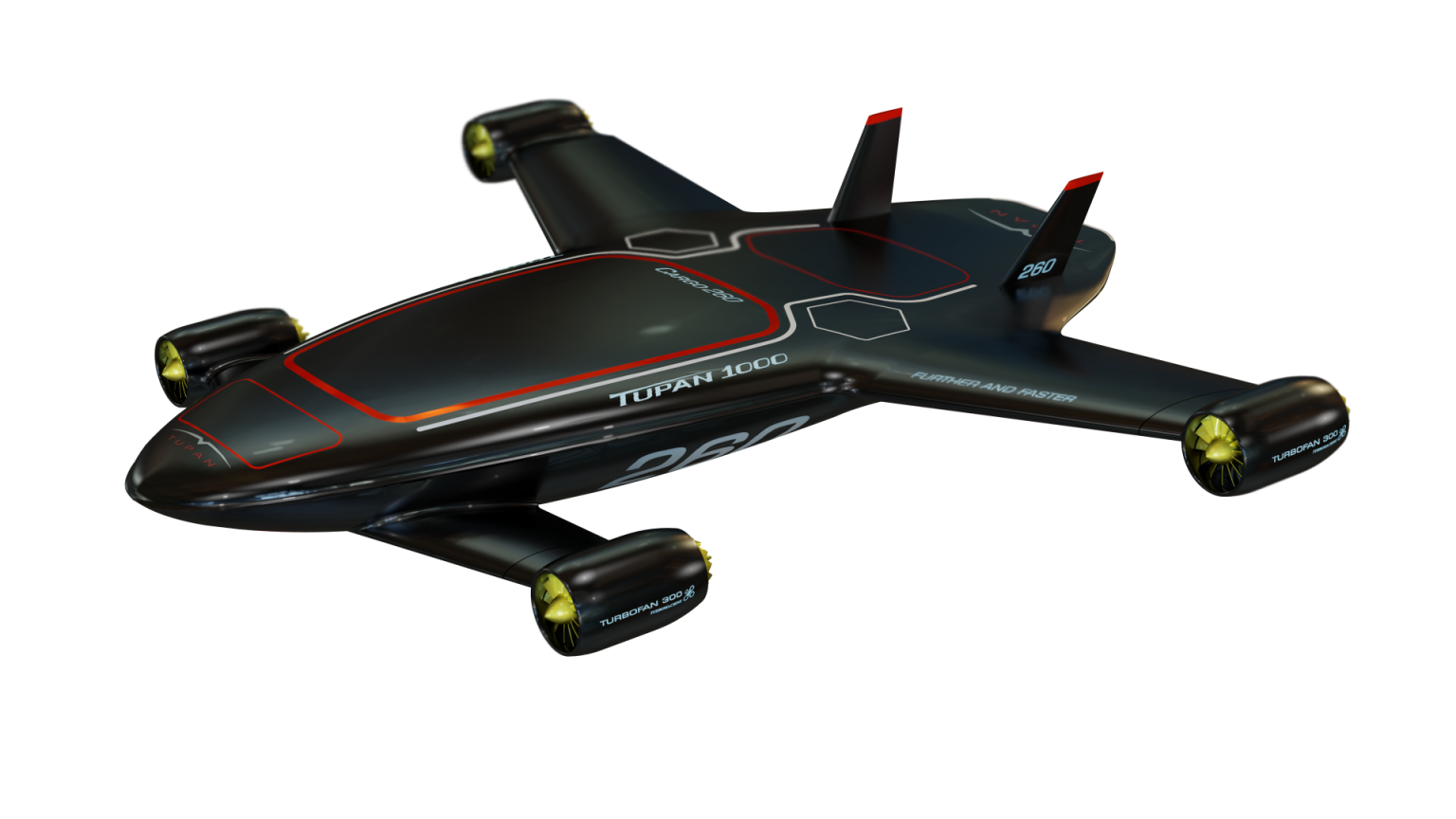Click Here to View This Page on Production Frontend
Click Here to Export Node Content
Click Here to View Printer-Friendly Version (Raw Backend)
Note: front-end display has links to styled print versions.
Content Node ID: 419815
Battery energy density is still a problem for designers who want to create electric aerial vehicles that can carry a decent payload for a useful distance, but the team at Tupan Aircraft believes it has come up with what it feels is a reasonable solution. Tupan’s family of high-speed, vertical takeoff and landing (HSVTOL) drones combines electric propulsion with tiny Jet-A fueled turbine engines to deliver speed, payload capacity, and redundancy in a compact and capable package.
Tupan is a start-up founded by a group of Brazilian engineers with years of experience in propulsion system design, flight testing, aerodynamics, and autonomous flight. The company, based in Jacarei near São Paulo, is working with Turbomachine in São José dos Campos on the development of the small turbine engines that are key to the design of the Tupan-1000, -2000, and -3000 vehicles.
Tupan CEO Alberto Pereira founded Turbomachine to develop a small stationary turbogenerator for Petrobas then co-developed a 1 MW turbine engine then the TJ1000 turbojet engine for the Brazilian Army’s MTC300 cruise missile.
Weighing just 16 kg (35 pounds), Tupan’s turbofan engine will deliver 180 kg of thrust with a bypass ratio of 2.5:1. With low noise levels an important goal, the engine features an axial fan, centrifugal compressor, and two-stage turbine—all Fadec controlled.
The Tupan aircraft is configured with four turbine engines on short wings at each corner of a flattish fuselage. Each engine can rotate to vertical or horizontal positions. Jet-A is stored in tanks in the fuselage. The largest Tupan will be able to carry up to 600 kg and fly at 850 km/h (528 mph) and have a maximum range of 1,200 km (746 miles). “We’re trying to overcome the challenges of high-speed VTOL flight,” Pereira said.
The carbon-fiber fuselage also contains batteries for four electric motor/ducted fan propulsion units that provide vertical lift to supplement the turbofan engines. The design will allow for a safe landing using electric power in case of failure of all four engines, according to Pereira. The benefit of having both types of powerplant is that the electric motors respond much faster than turbofans to power demands so the combination is more flexible for certain maneuvers.
In addition to battery power for the electric propulsion, the turbine engines will drive generators to keep the battery system topped up. Each engine can feed one motor and the batteries that serve it, but not all motors at once.
So far Tupan has flown an electrically-powered radio-control model—the Tupan-RC 300—and is building a five-meter version. The RC 300 can carry a 2.5-kg payload up to 30 km at speeds of 150 km/h, while the Tupan-1000 will carry 140 kg; 280 kg for the Tupan-2000; and 600 kg for the Tupan-3000.
Although for now the Tupan aircraft are designed to carry cargo and for other unmanned applications—including firefighting, agricultural spraying, and military—the company plans on eventually developing passenger-carrying vehicles.
The company indicated to FutureFlight that the design is somewhat modular, in that the turbofan engines could be swapped with electric propulsors for applications where the turbine engines aren’t needed. An example of this might be for agricultural spraying, where short-distance, heavy-payload flights are the norm.
